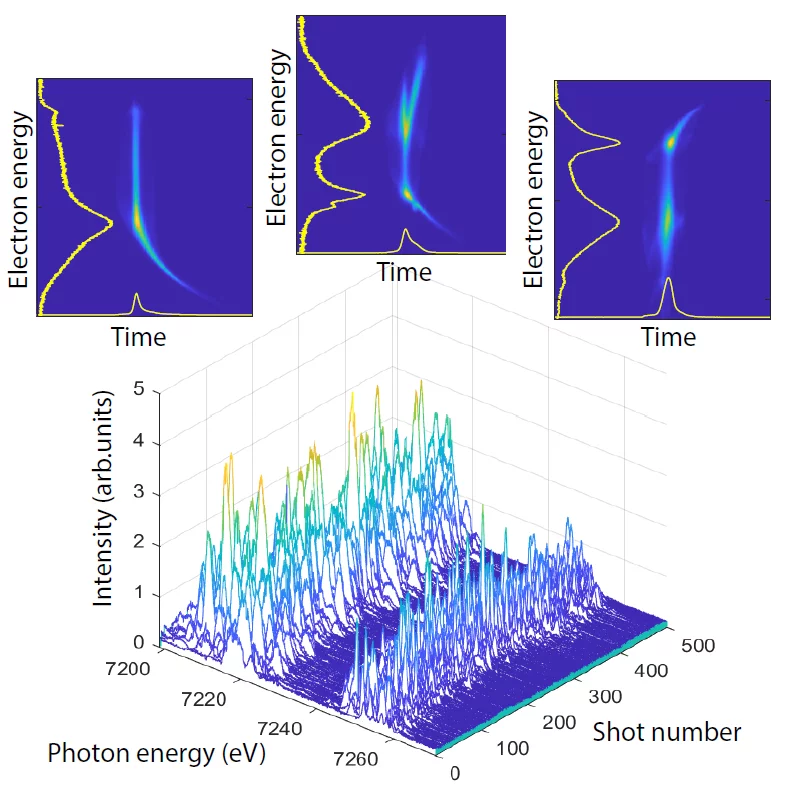Europe’s shortest yet high-photon-energy X-ray pulse has just been created, bringing researchers closer to observing ultrafast processes at the atomic level.
It often pays to be fast in science. “Some processes, such as electron dynamics in an atom or molecule, happen on the attoscale,” says Alexander Malyzhenkov, a researcher at the Paul Scherrer Institute (PSI). An attosecond is 10–18 s, or one billionth of a billionth of a second. To investigate these ultrafast processes, researchers need very short pulses of light.
SwissFEL is a free-electron laser facility at PSI that generates X-ray beams for a wide range of experiments, from mapping the atomic structure of solid materials to observing biological processes. Its lasers can create a powerful X-ray pulse, typically lasting 10 to 100 femtoseconds — with 1 femtosecond being equal to 10–15 s. However, this still isn’t short enough for attosecond events.
Free-electron lasers create X-ray pulses by accelerating bunches of electrons and sending them through an undulator — a long array of permanent magnets with alternating poles — forcing them to oscillate from side to side. As the electrons move along this wiggly path, they release X-ray radiation. This in turn forces the electrons to coalesce into bunches that align with the radiation’s wavelength. The ongoing feedback between these electron bunches and the radiation exponentially increases the power.
“In a free-electron laser, the final pulse duration is often equivalent to that of the driving electron beam,” explains Malyzhenkov, “so that by strongly compressing the electron bunches, one can produce very short X-ray pulses.”
Three is better than two
The electron bunches are usually shortened by compressing the beam in two stages before sending it into the undulator. Each compression stage is achieved using four bending magnets that act like a chicane on a racetrack to slow down the electrons at the front so those at the tail can catch up. By experimenting with a third compression stage, Malyzhenkov and his PSI team managed to squash the electron beam enough to produce an X-ray pulse of around 300 attoseconds.
Electrical charges in free space generate Coulomb forces, which can disrupt the electron beam. Compressing the beam just before the electrons entered the undulator minimized these effects. “This made our attosecond X-ray pulse more stable than what has been achieved with two-stage compression,” says Malyzhenkov. Unexpectedly, exploiting Coulomb forces earlier in the compression stages meant they could split the electron beam to produce two separate attosecond X-ray pulses with different wavelengths (or colours, see figure). These could be used to study molecular and atomic processes by triggering them with one beam and immediately probing them with the other.
“We hope that these ultra-short, high-photon-energy X-ray pulses will be used at SwissFEL in the near future to study ultra-fast processes,” says Malyzhenkov, “and since our methods used a standard X-ray free-electron laser setup, they can be used immediately at similar facilities across the world.” The researchers seek to create even more powerful pulses. “If we can generate X-rays with terawatt-level power”, with a terawatt being one trillion (1012) watts, “we could potentially use them for imaging individual atoms within a molecule,” he adds.
Reference: Malyzhenkov, A. et al. Single- and two-color attosecond hard X-ray free-electron laser pulses with nonlinear compression. Phys. Rev. Res. 2, 042018(R) (2020).
Read full article: here


